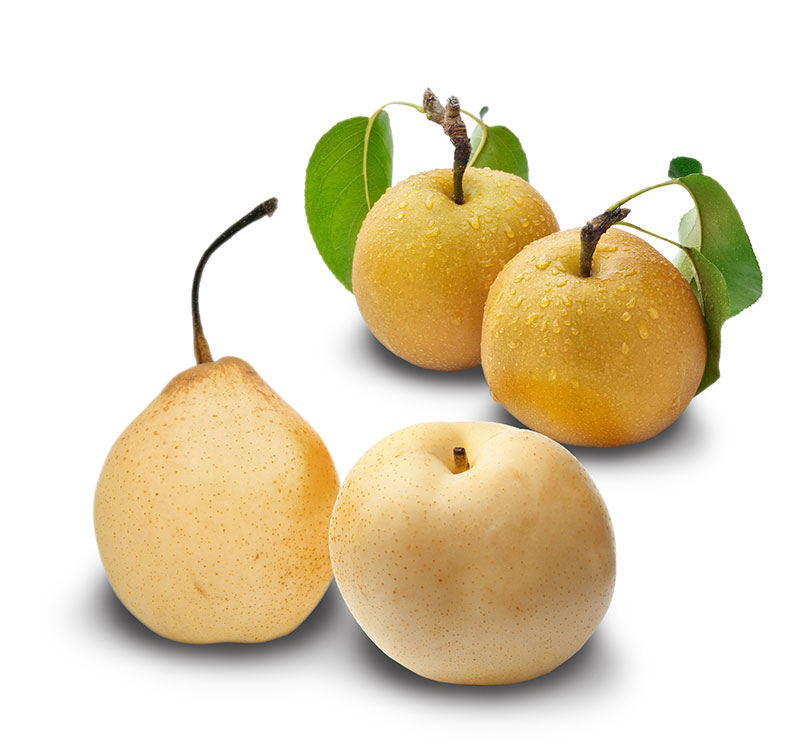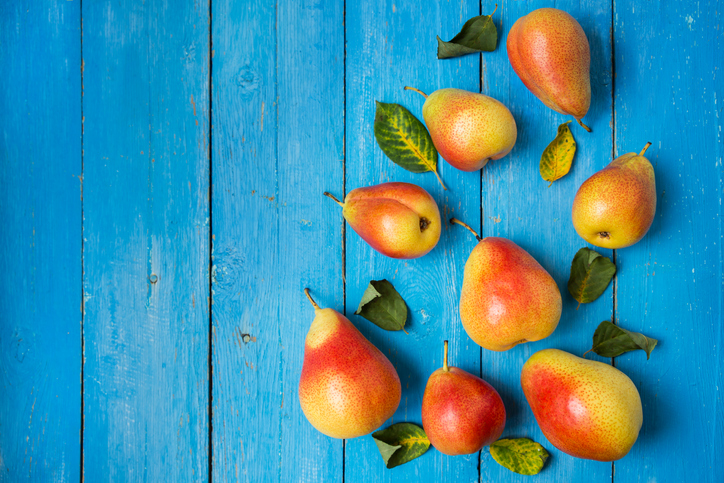Pears, Asian

Availability:
| J | F | M | A | M | J | J | A | S | O | N | D |
Description:
There are two main families of pears: European and Asian. European is the most common and what we think of when referring to a pear with their elongated neck and a rounded bulbous bell shape on the bottom half (pyriform). Asian pears, on the other hand, look more like apples and are sometimes sold as Apple Pears.
There are many Asian pears varieties known, such as Nashi, 20th Century, Yali, or Shinseiki to name a few. Asian pears have a non-acid sweet flavor and a crisp water chestnut/jicama texture. The skin may be a little gritty, so consider peeling if serving in a salad. They are best for raw applications and are generally “presentation” type pears which are perfect for fruit baskets where an inviting fruit with high eye-appeal is important. There is usually no color change when ripe.
Click the Produce 101 links below for more info on the different varieties, and the best way to ripen pears.
Recommended Storage
When handling pears, take care. They are highly susceptible to bruising and scarring, as well as skin slip, so don’t stack heavy things on top of the cases, and don’t drop the cases. Treat them delicately, especially when ripe. Asian pears are usually shipped in netted socks to prevent bruising and damage during shipment.
The recommended optimum storage temperature is 32° – 40°F. The temperature fluctuates from the front to the back of the cooler due to the location of the cooling unit and frequency of the door being opened. Pears produce a lot of ethylene—keep them away from sensitive items to maximize the produce shelf-life of everything in your cooler. Download our PDF for more cooler storage hints.
Check out what’s going on this week. For our latest market update, please see The FreshPress. You can also click here to be notified when we post fresh new videos.


